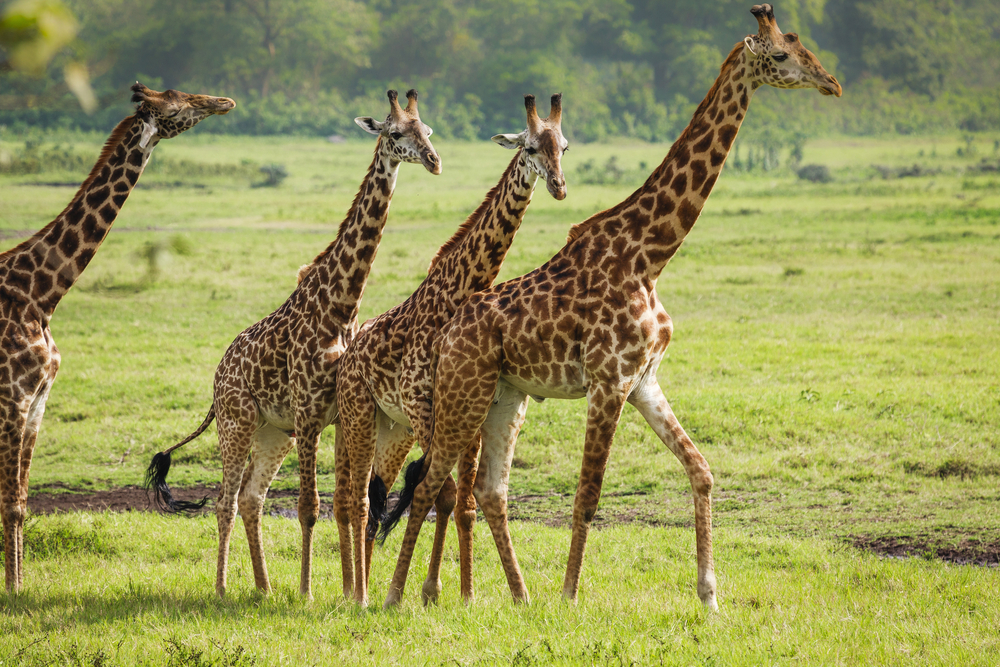Burigi-Chato Overview
Burigi-Chato National Park, known locally as Hifadhi ya Taifa ya Burigi-Chato, is one of Tanzania’s newest and most expansive protected areas, established in 2019. Covering approximately 4,707 square kilometers (1,817 square miles), this stunning park stretches along the western edge of Lake Victoria, near the borders of Rwanda and Uganda. It is a magnificent blend of lakes, savannah plains, rolling hills, and riverine forests, showcasing the unspoiled wilderness and breathtaking beauty for which Tanzania is renowned.
The park’s landscapes are remarkably diverse, offering visitors a wide range of scenic vistas. Burigi Lake and Lake Victoria form picturesque backdrops, with tranquil waters glistening under the African sun. The park’s gently rolling hills and low-lying plains are interspersed with dense woodlands and wetlands, creating habitats that are both visually striking and ecologically vital. While the park does not feature towering mountains or grand waterfalls, its pristine lakes and undulating savannahs more than compensate with their tranquil beauty.
Burigi-Chato National Park is known for its exceptional wildlife, making it an exciting destination for safari enthusiasts. Large mammals such as African elephants, buffaloes, zebras, and giraffes are abundant, grazing peacefully across the open plains. Impala, waterbuck, and topi thrive in the park’s wetlands and grassy savannahs, while predators such as lions, leopards, and spotted hyenas roam the territory in search of prey. The park has also seen a resurgence of antelopes and other herbivores thanks to ongoing conservation efforts.
The shores of Burigi Lake and its surrounding wetlands provide vital habitats for aquatic life and bird species, solidifying the park’s reputation as a birdwatcher’s paradise. African fish eagles, herons, pelicans, and kingfishers are common sights, while migratory birds enhance the park’s avian diversity during certain seasons. Crocodiles and hippos inhabit the calm waters, offering thrilling wildlife viewing opportunities during boat safaris along the lake.
Burigi-Chato National Park has become a conservation success story. It was created through the amalgamation of several smaller reserves, reflecting Tanzania’s commitment to preserving its natural heritage. Managed by the Tanzania National Parks Authority (TANAPA), the park focuses on protecting endangered species, combating poaching, and restoring degraded habitats. Sustainable tourism initiatives encourage responsible visitation while supporting local communities through eco-friendly projects.
Visitors to Burigi-Chato National Park can experience its natural beauty and wildlife through traditional game drives, walking safaris, and boat excursions. Game drives across the open plains allow visitors to observe large herds of wildlife against a backdrop of stunning lakes and woodlands. Boat safaris on Burigi Lake provide unique opportunities to view hippos, crocodiles, and waterbirds up close while enjoying the serenity of the water. For those seeking a deeper connection with nature, guided walking safaris offer an intimate experience of the park’s flora and fauna.
In summary, Burigi-Chato National Park is a gem of Tanzania’s northern wilderness, celebrated for its pristine lakes, diverse wildlife, and critical conservation efforts. It is an emerging destination that offers visitors a chance to explore unspoiled natural beauty and witness the wonders of Tanzania’s flourishing ecosystems.
















































































